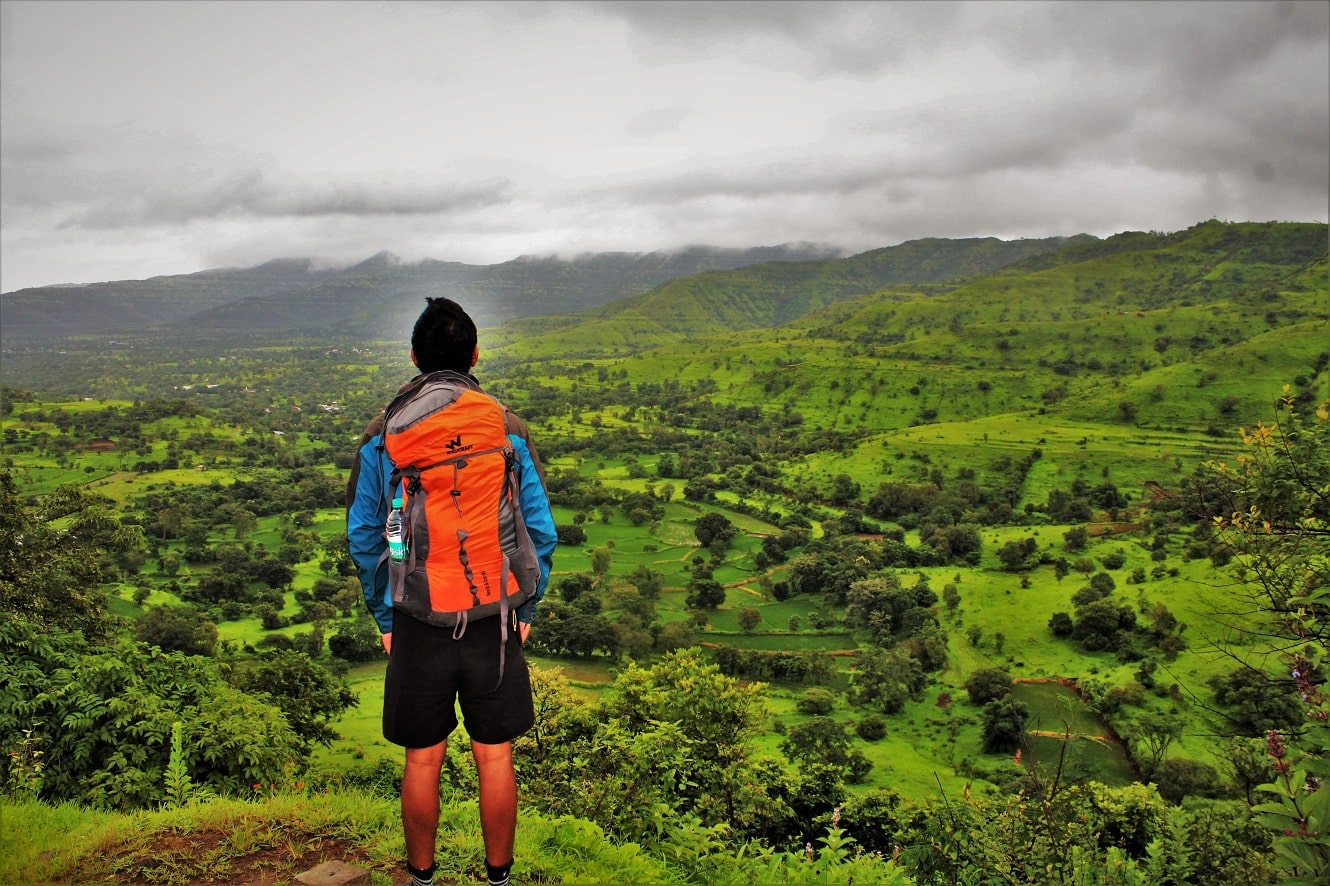Are you someone who gets excited about crossing bridges? You’ve probably walked across bridges made of iron, cement, steel, and ropes but what if I told you there’s something truly extraordinary waiting to be discovered? Picture this: a bridge not built by human hands, but woven together by the roots of rubber fig trees. Welcome to the enchanting world of the Double Decker living root bridge!”
Imagine finding a magical bridge made of tree roots, hidden deep in the forests of Meghalaya. That’s exactly what the Double Decker Living Root Bridge is! It’s like something out of a storybook. This special bridge is tucked away in the hills of northeastern India, waiting for adventurers like us to find it. As we explore, we’ll be surrounded by lush green trees, sparkling waterfalls, and lots of exciting things to see. Let’s go on this awesome journey together and uncover the secrets of the Double Decker Living Root Bridge!”
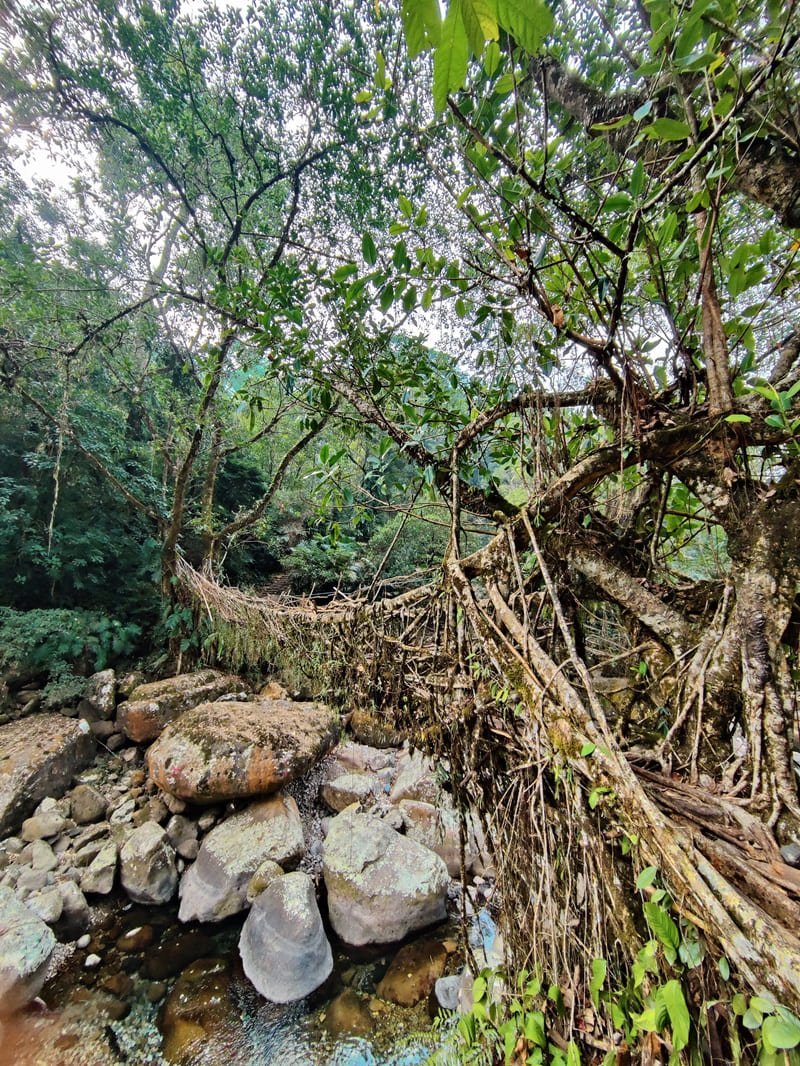
How to reach the start point of the Double Decker Living Root Bridge trek.
Guwahati railway station is the nearest railhead to Tyrna (Cherrapuji) which serves as the gateway to the Double Decker Living Root Bridge. Guwahati is well connected to major cities of India by road, rail, and air. On reaching Guwahati the best way to reach Cherrapunji is to take a shared taxi to Shillong (300-400 INR)which takes around 2-3 hours and again a shared taxi to Cherrapunji which is about an hour drive. While searching for a shared taxi in Shillong, ask for Sohra as most of the drivers are not familiar with the name Cherrapunji.
On reaching Cherrapunji, you can hire a local taxi and ask him to drop you at Tyrna Village which is the start point of the trek. The village is approx 10 km from the main town. Another option is to rent a two-wheeler/car from either Guwahati or Shillong. The car rental starts from Rs 2000 whereas the two-wheeler rent starts from Rs 800. We rented a Ntorq from Shillong scooty and Bike rental which cost us Rs 800 per day. On the Gmaps you can put Tyrna Parking to get to the exact location.
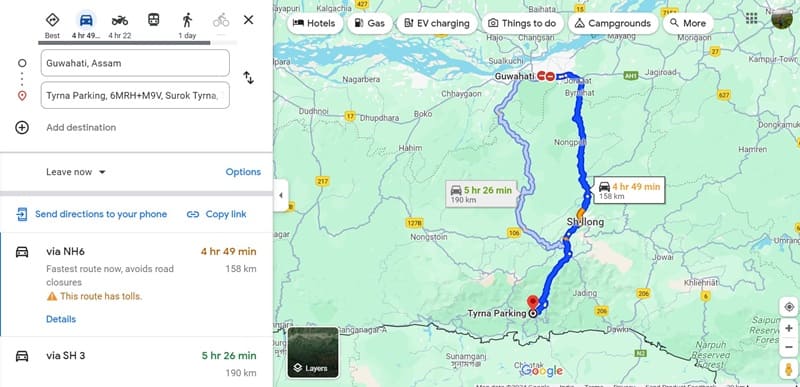
Difficulty level of Double Decker Living Root Bridge trek
The trek to the Double Decker Living Root Bridge involves going down around 3,500 steps to reach Nongriat village, where the bridge is. It’s not too tough, but it can be tiring, especially if you’re not used to walking a lot or climbing stairs. Also, the steps at a few points are very narrow which makes it a little more difficult. It usually takes about 1.5 to 2 hours to reach the bridge, depending on how fast you walk. If it’s rainy, the steps might get slippery, so it’s good to be careful. Unlike other treks where you generally hike first and later descend, here it’s the opposite. Coming back may be more time-consuming as one would need to climb all those 3500 stairs.
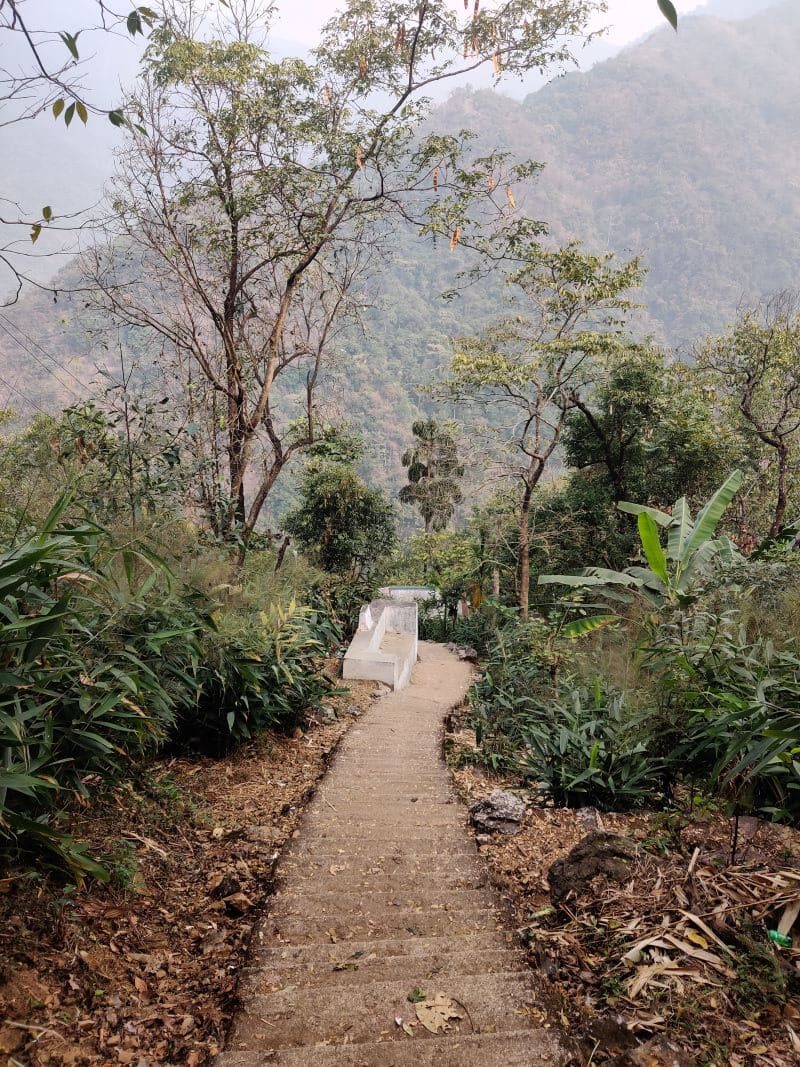
My journey to Double Decker Living Root Bridge trek
Our journey to the Double Decker Living Root Bridge began early in the morning, around 8 am. We left our hotel and reached the base village from our rented scooty, enjoying the scenic 10 km ride that took us just 30 minutes. The route was breathtakingly beautiful, with lush greenery and winding roads.
Upon reaching the starting point, we found a few basic eatery shops, perfect for grabbing a quick bite before beginning our trek. While local guides were available, we decided to navigate the route on our own as it wasn’t confusing at all.
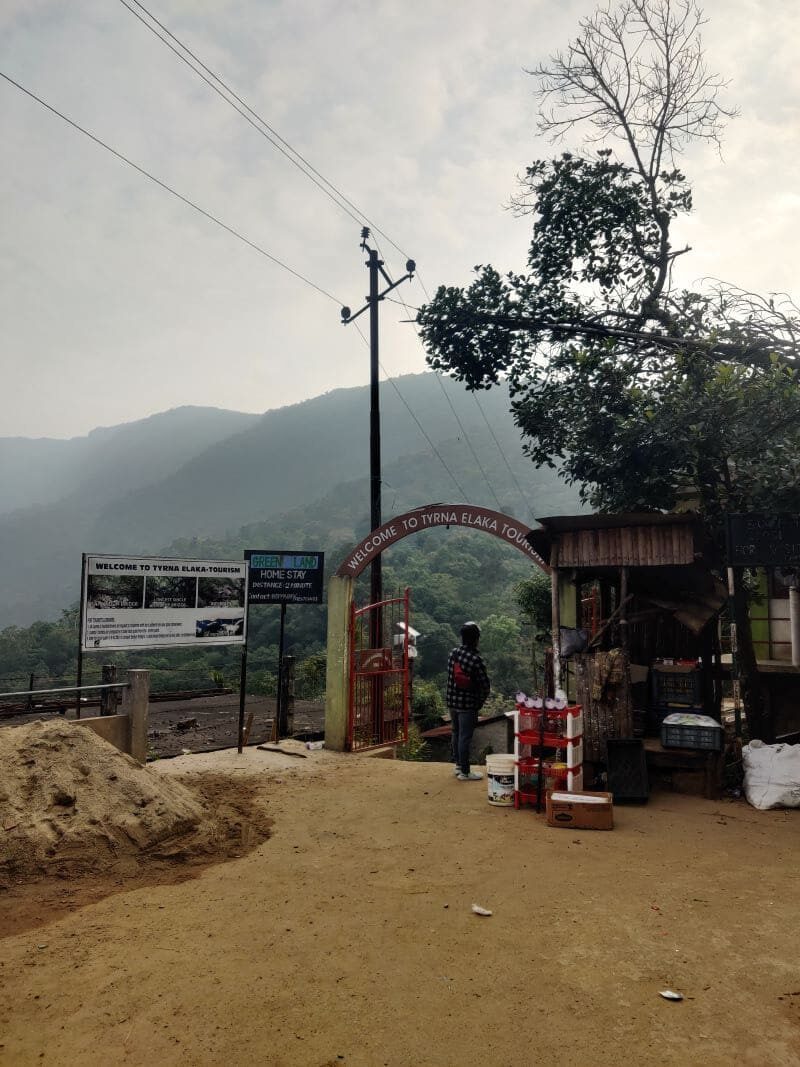
As we geared up for the trek, village boys approached us, offering sticks for support along the way. The journey truly began as soon as we started descending the stairs, each step leading us closer to our destination. It was disheartening to see trash littered along the way, a reminder of the importance of responsible tourism. There are cemented bins and cute baskets where you can throw the garbage.
Nevertheless, we pressed on, fueled by the anticipation of what awaited us. Along the route, we encountered a few shops serving refreshments such as Maggi, lemon water, biscuits, and chips, providing much-needed energy for the ascent. The views of the nearby surroundings were breathtaking. After approximately 2000 steps, we reached the village, greeted by the sight of charming homestays and bustling shops, each offering a glimpse into the local way of life.
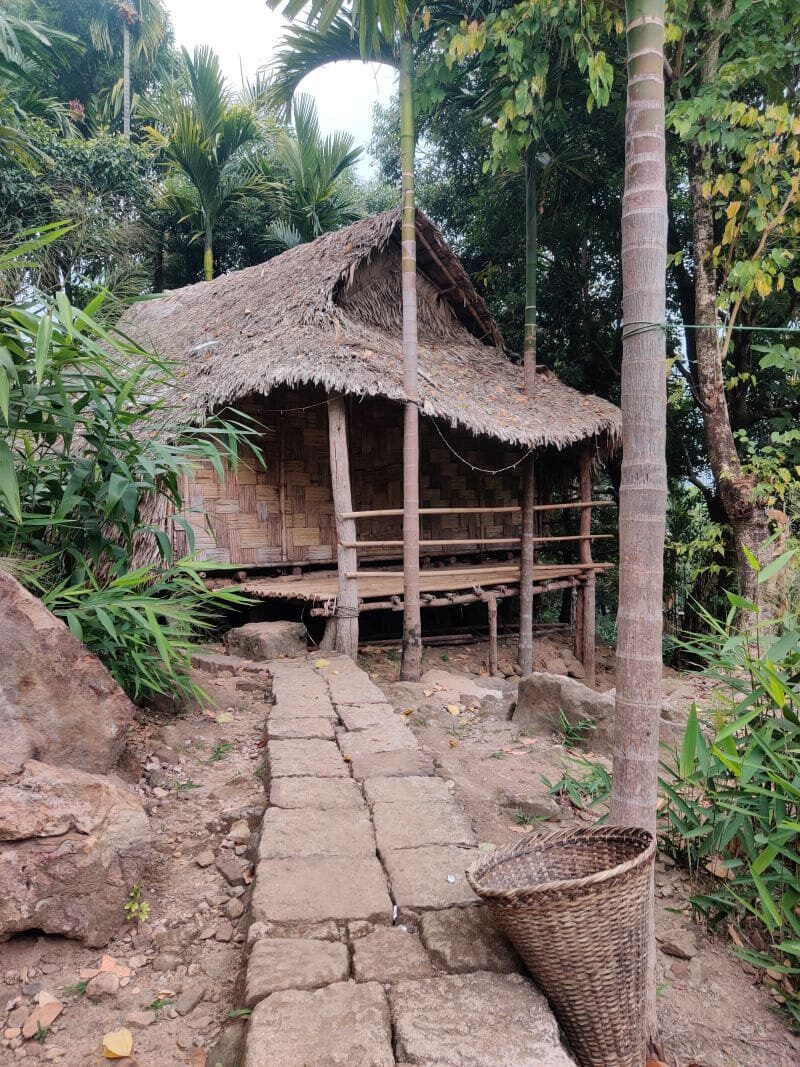
At the village, you could see two boards, one showing the way to the longest single Living Root Bridge and one to the double-decker. We decided to explore the longest single Living Root Bridge first. The entry fee was Rs 40 per adult.
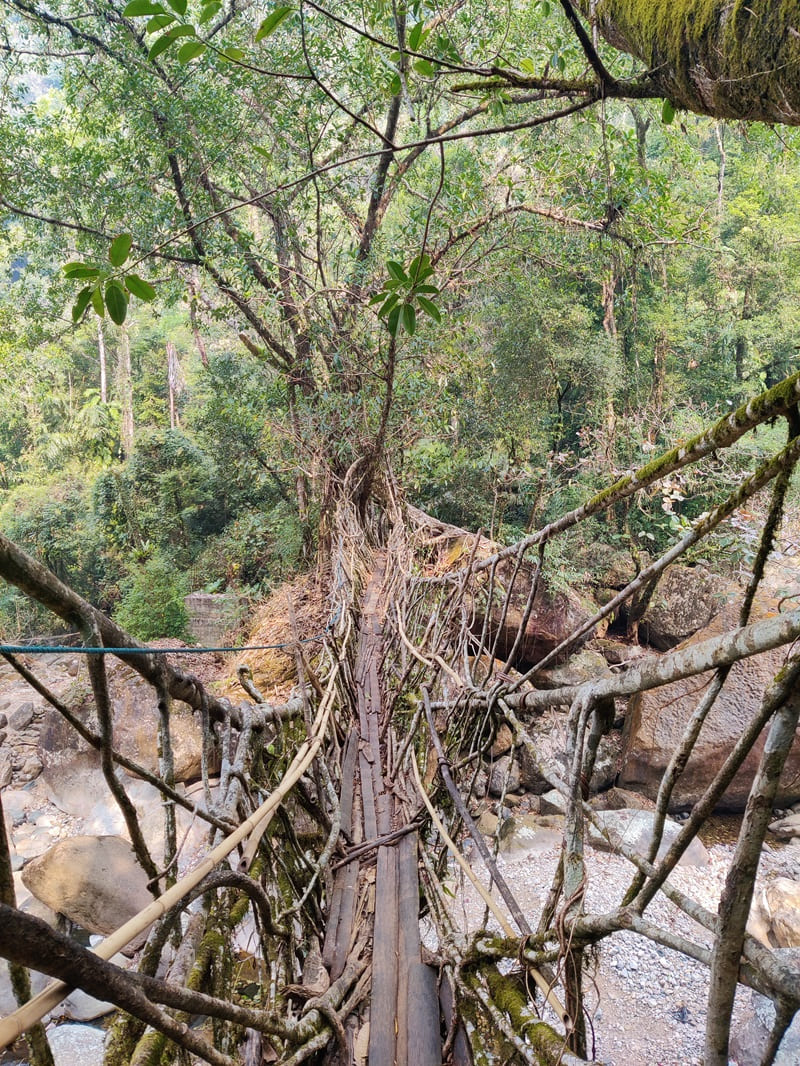
As we reached the longest single-living root bridge, we couldn’t help but marvel at its beauty. It was like something out of a fairy tale, standing tall and majestic amidst the greenery. “Wow, what a beauty!” we exclaimed, taking in the scene before us. And the best part? There was no one else around, so we had the bridge all to ourselves. It was peaceful and quiet, allowing us to enjoy the moment and appreciate the bridge’s charm without any distractions.
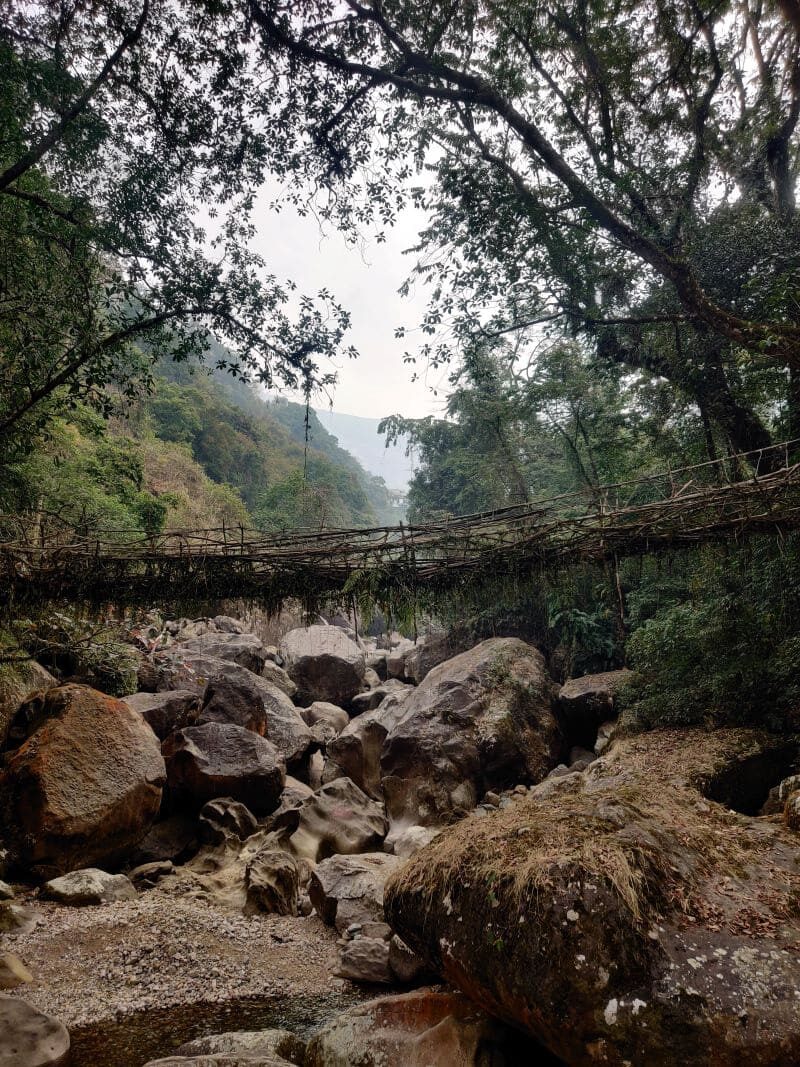
After exploring the longest single-living root bridge, we continued our trek towards the Double Decker Living Root Bridge, located another 45 minutes away on the opposite side. Despite the additional distance, our excitement only grew as we ventured deeper into the heart of the forest, eager to witness the marvel that awaited us.
As we got closer to the Double Decker Living Root Bridge, we were super excited. The entry fee for this bridge was Rs 50 per adult. The bridge looked amazing like it was straight out of a storybook. We stepped onto it and felt amazed by how the roots had grown together to make it. It was a bit crowded though.
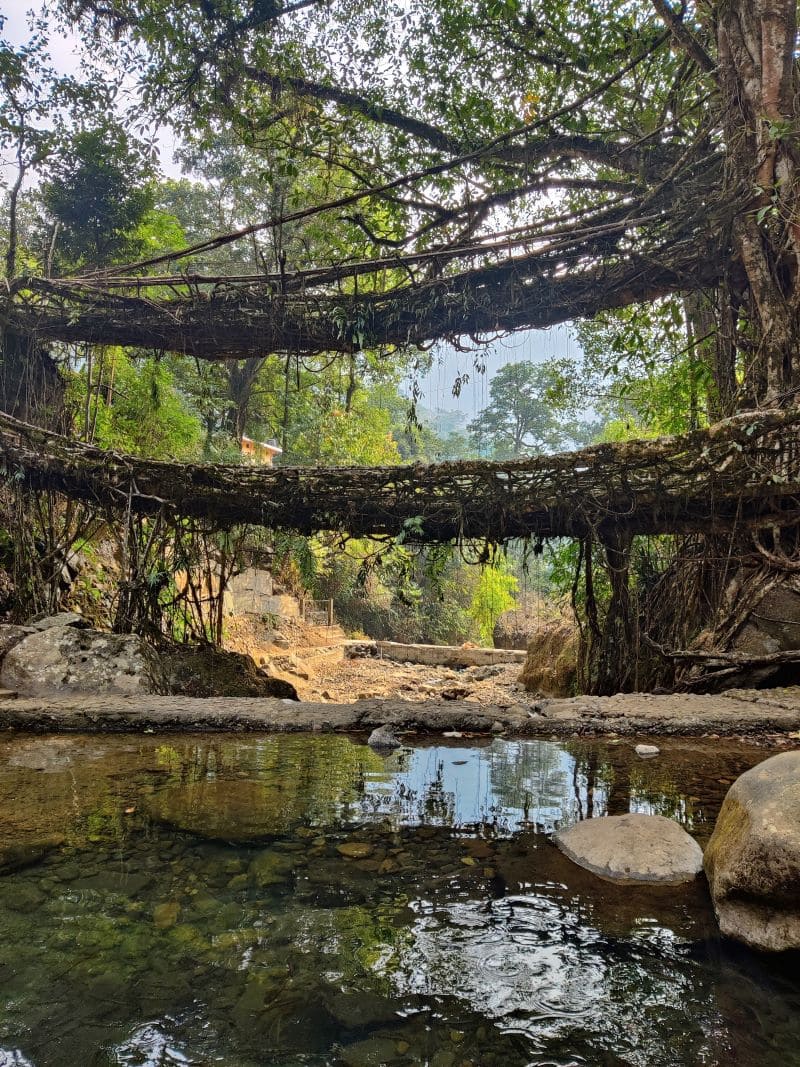
After enjoying the bridge’s beauty for a while, we discussed if we should head to Rainbow waterfall which was another 1.5 hours of trekking ahead. We decided not to, as we wanted to head back to Shillong on the same evening and driving became a little difficult in the cold chilly winds. So we wanted to leave by afternoon.
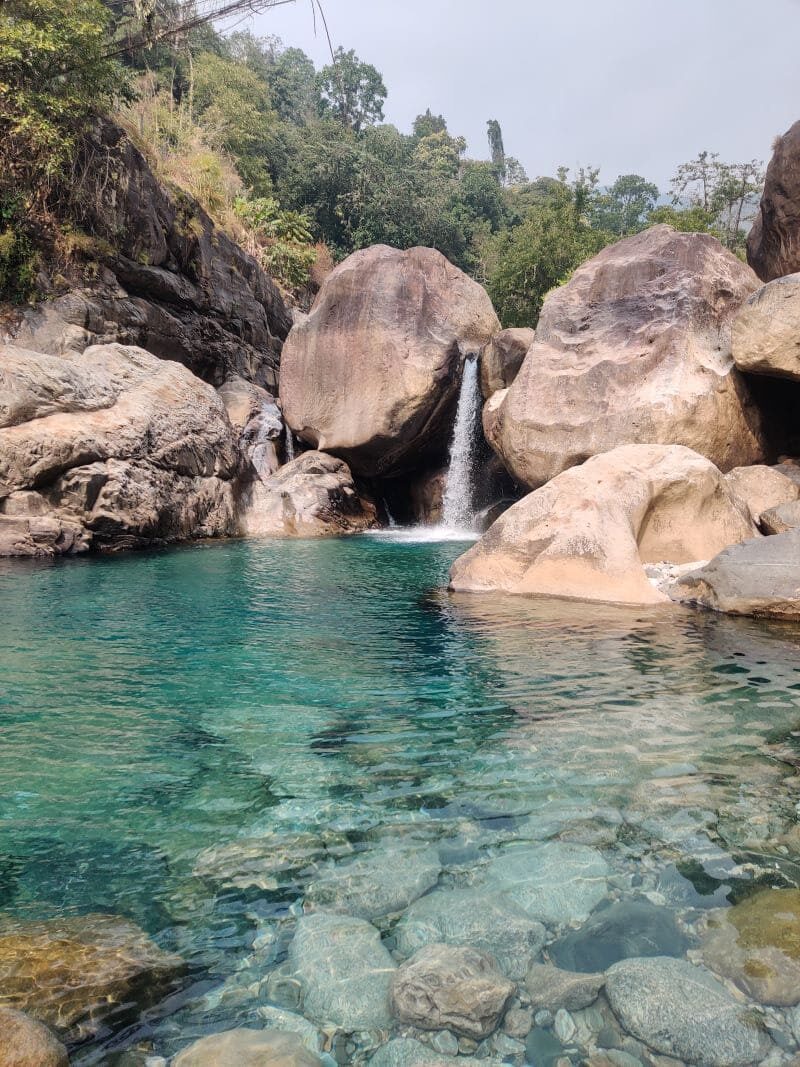
On our return, we dived a beautiful waterfall which was marked as Blue Lagoon on Gmaps. The water was very chilled. Even though we were sad to leave, we felt lucky to have seen something so incredible. It was more than just a trek; it was a journey of discovery, connection, and appreciation for the natural world.
The best time to do the Double Decker Living Root Bridge trek
The best time to trek to the Double Decker Living Root Bridge is during the dry season, typically from October to April. This period offers favorable weather conditions, with minimal rainfall and comfortable temperatures, ensuring a more enjoyable and safer trekking experience. The trails are also in better condition during this time, reducing the risk of slipping on muddy paths. It’s essential to avoid the monsoon season from May to September, as heavy rainfall can make the trails slippery and challenging to trek.
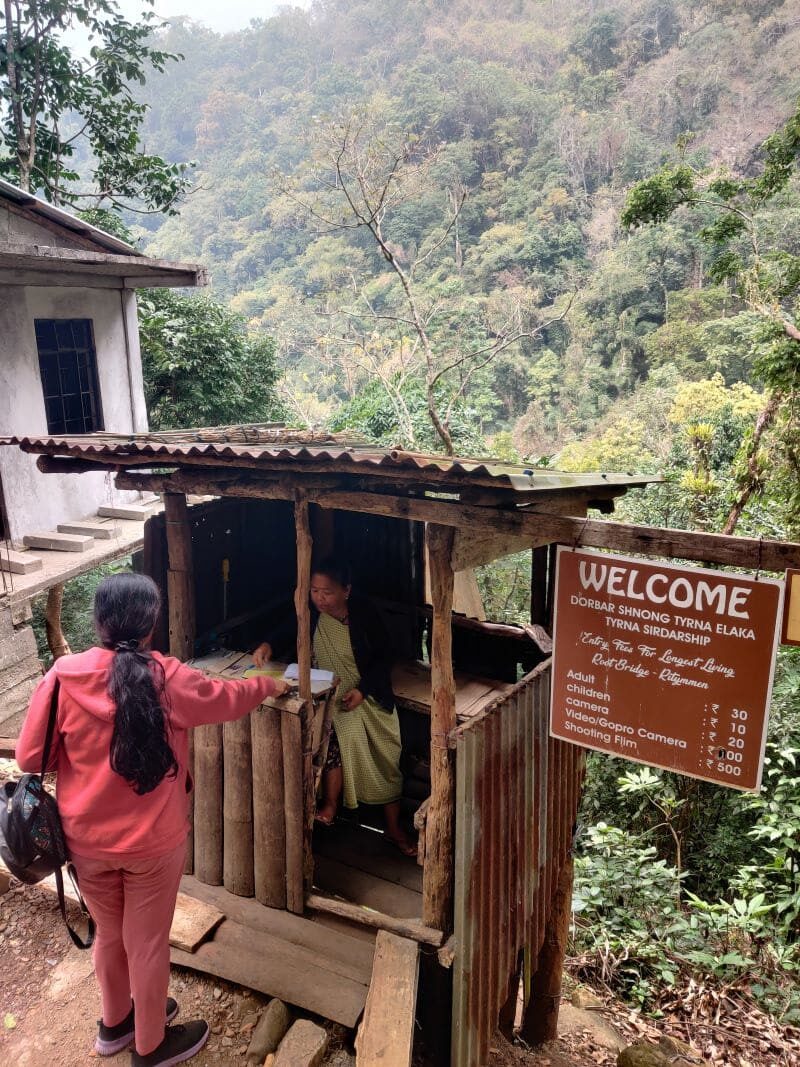
Network connectivity during the Living Root Bridge trek
During the trek to the Double Decker Living Root Bridge, network connectivity can be spotty. While Airtel and Jio signals may appear in some patches, overall connectivity may be unreliable. It’s a good idea to inform someone about your plans. Enjoy the trek and the natural beauty around you, and be prepared with offline maps and essentials like a charged phone and power bank.
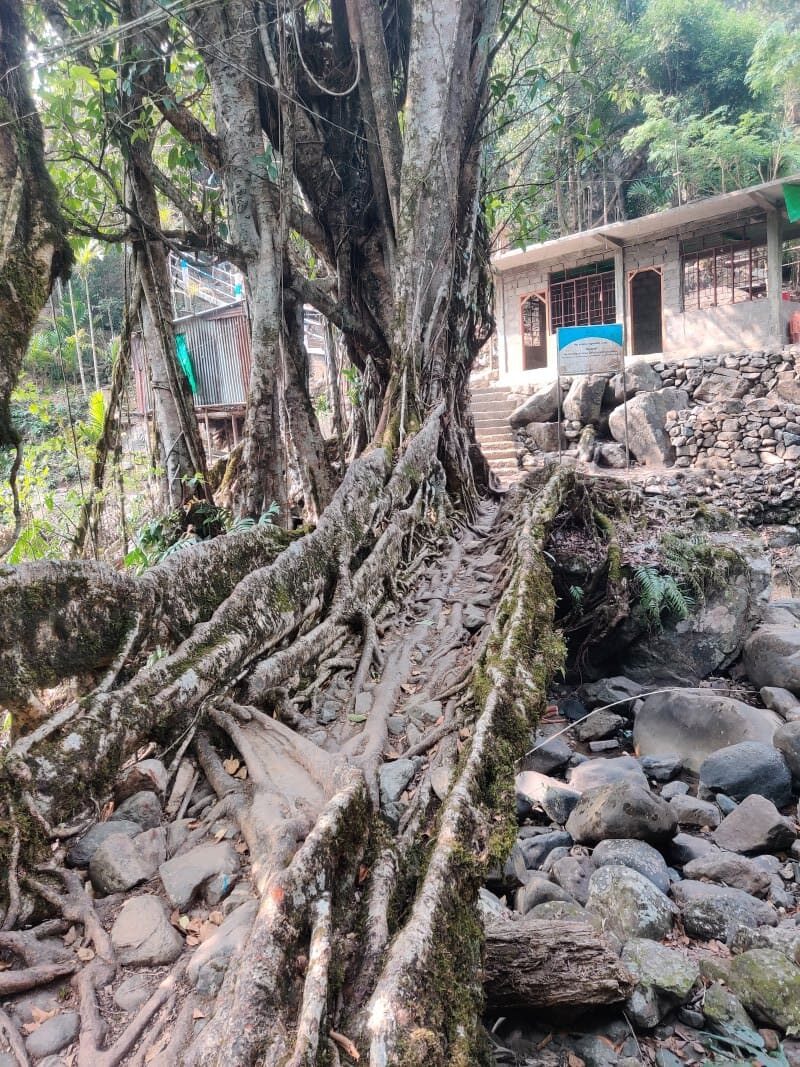
Food and stay options
During the trek to the Double Decker Living Root Bridge, you’ll find basic eateries offering snacks like Maggi noodles, lemon water, biscuits, and chips along the route. In Nongriat village, homestays provide cozy accommodation options, offering a glimpse into the local way of life. It’s advisable to book your stay in advance, especially during peak tourist seasons. Additionally, camping may be an option for those seeking adventure, but be sure to follow local regulations and leave no trace.
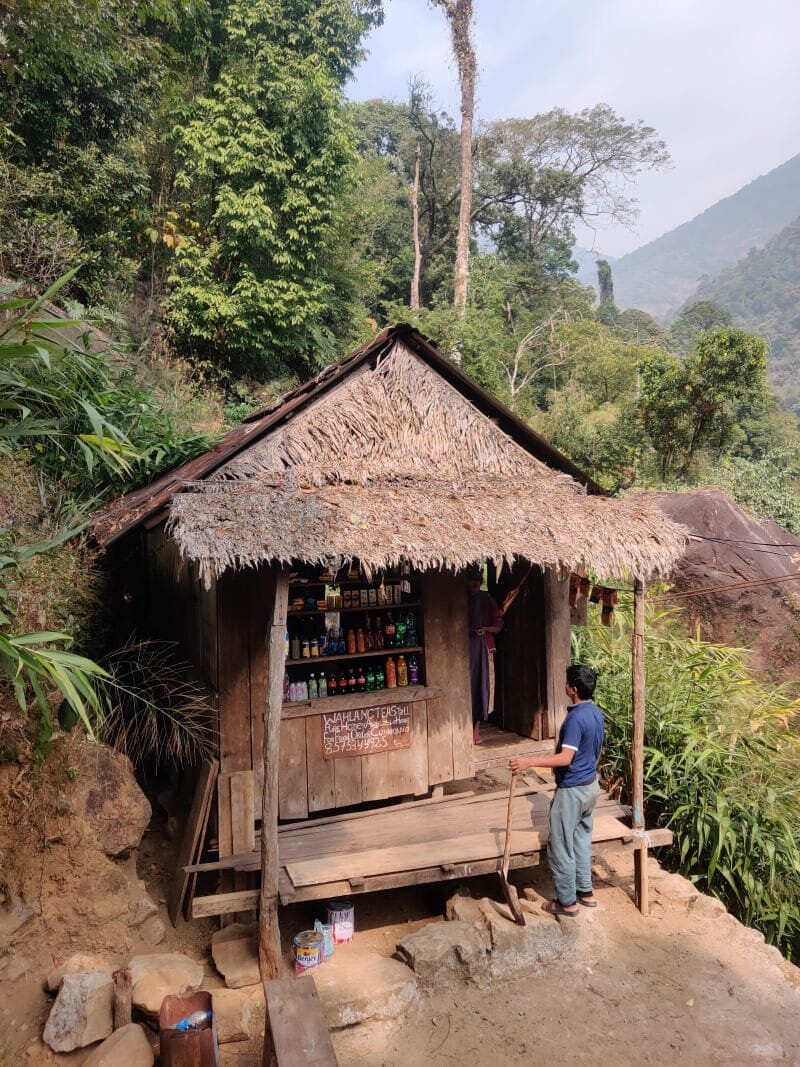
Hope you have enjoyed reading this travel blog/ travel guide on Double Decker Living Root Bridge. To get regular updates on upcoming blog posts from On a Cheap Trip, please subscribe by entering your name and E-mail address in the Newsletter below. You can follow me on Facebook, Instagram, Pinterest as well as on Twitter.

